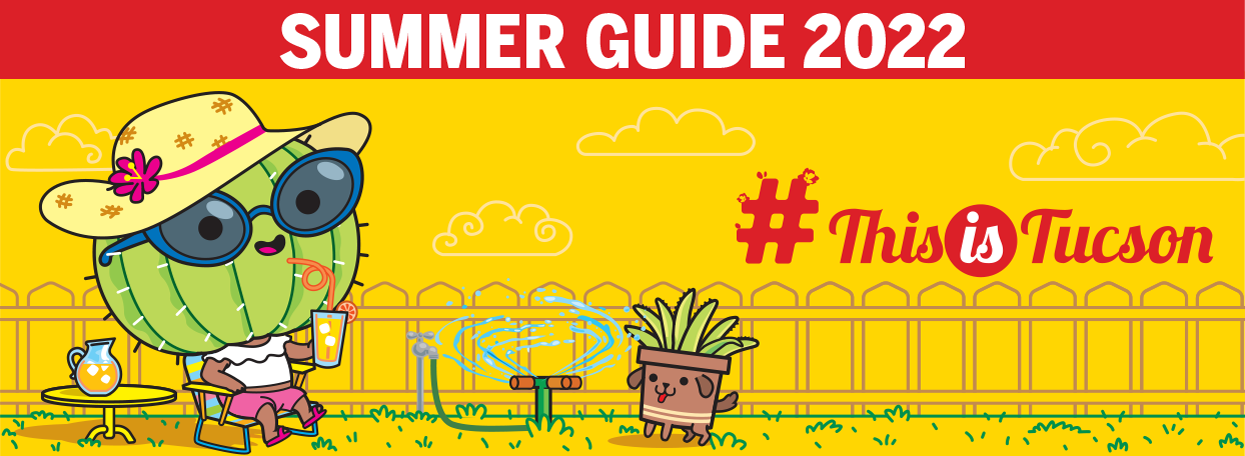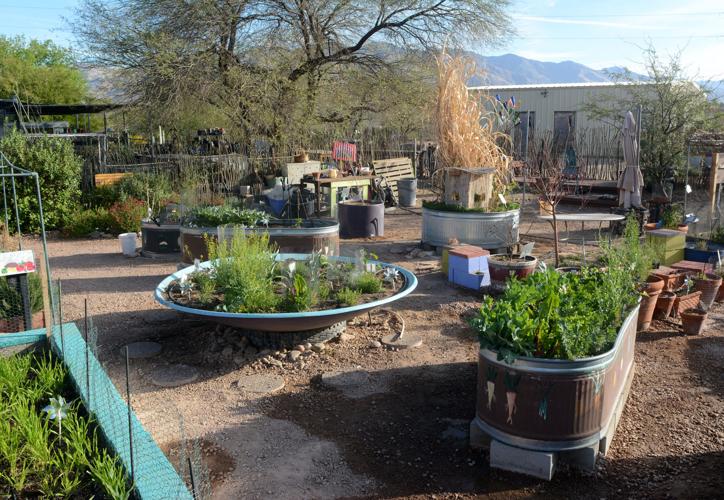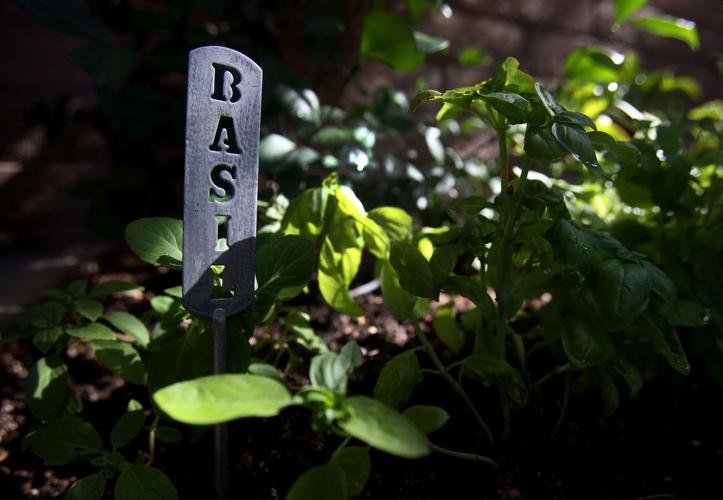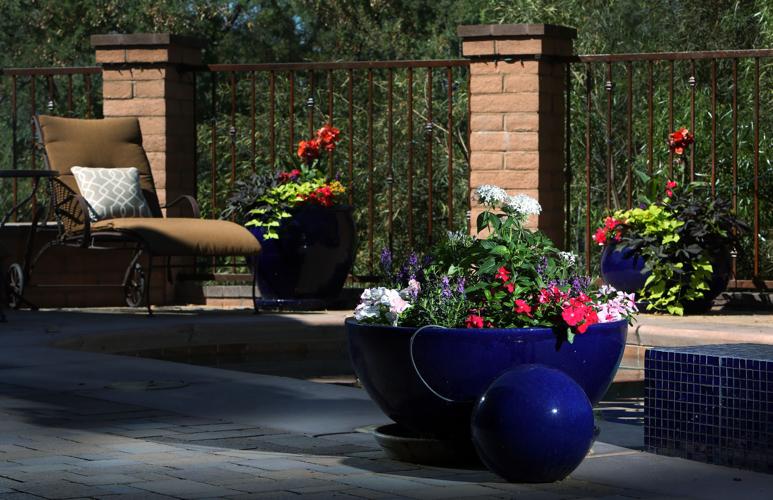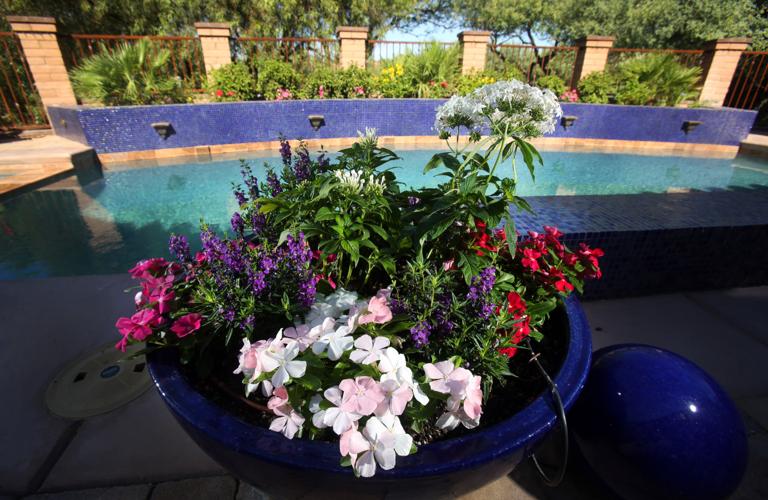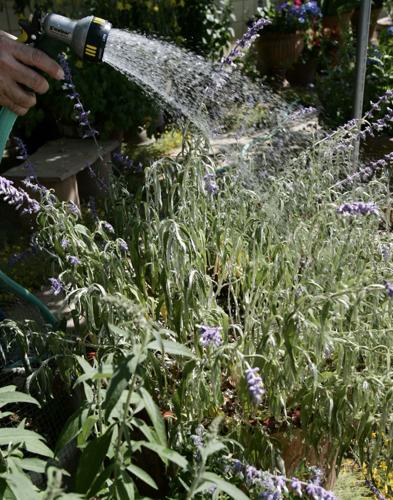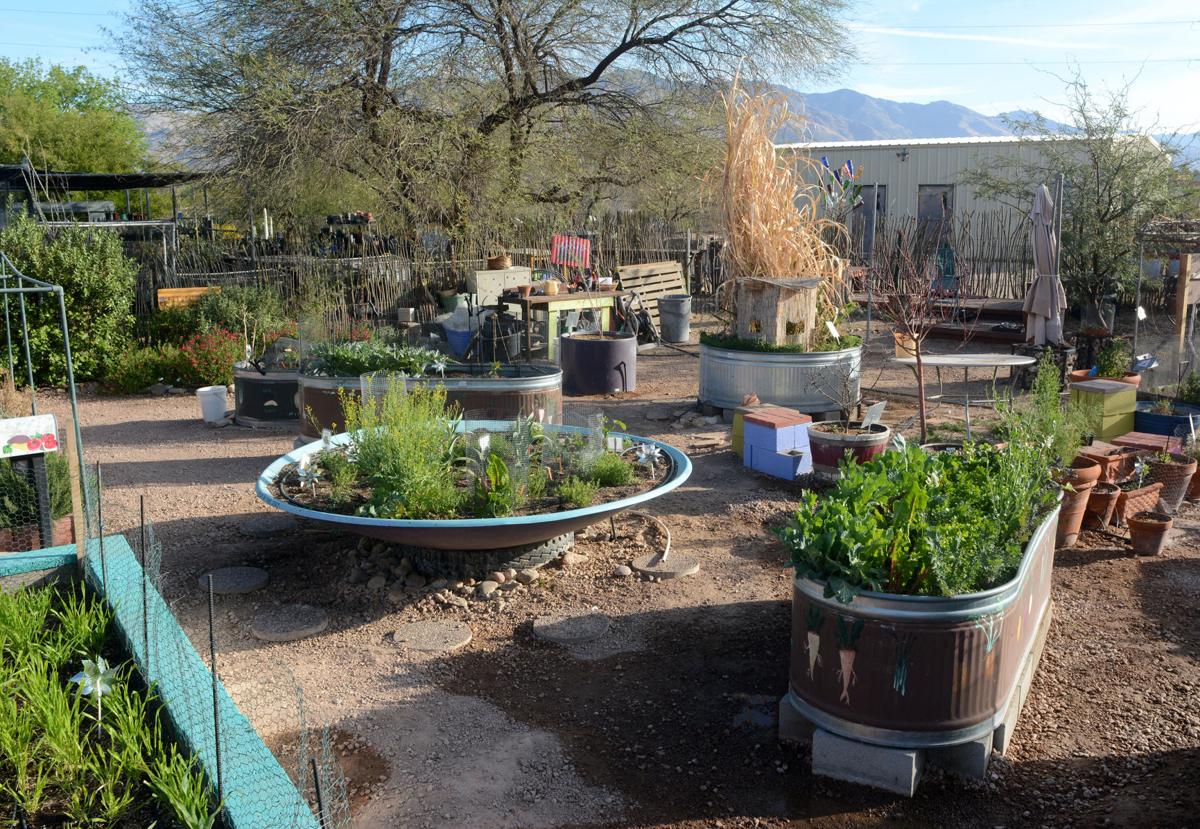This story was produced for Quality Pottery by #ThisIsTucson. Thank you for supporting the businesses that help support us!
Forget what you see in home and garden magazines — parents standing around the barbecue in their verdant backyard, while kids and dogs frolic and roll in the green, green grass.
Unless you want a water bill that rivals the national debt, one of those made-for-magazine-cover yards isn’t typical of the Sonoran desert landscape. That’s not to say, however, that gardeners and wanna-be green thumbs can’t surround themselves with lush foliage, colorful flowering plants and home-grown fruits and vegetables for a comparatively small investment in time, money and water.
Container gardens are a fairly easy way to bring life to one’s yard with relatively little effort. Not to mention, containers can be rearranged as desired, and plants are easily interchangeable, unlike those that are well-established, deeply-rooted in the ground.
Chris Kibler, a native plant specialist at The Magic Garden Nursery on East 22nd Street, has 30 years of experience gardening in the desert. He knows a what it takes to keep flora alive in Southern Arizona’s arid, 100-plus degree summer climate. He offered up five considerations to keep potted plants alive and blooming through the hottest months of the year.

Perennials, annuals, vegetables and herbs fill several tiered contained garden spaces in this Tucson backyard.
1. Variety
“There are certain plants that don’t mind being pot-bound,” Kibler said. “Other plants like to stretch. Most vegetables and fruiting plants can go into pots.”
Deciding what to grow — colorful blooms, lush green foliage or food-producing plants — is the easy part. Go to any nursery with a knowledgeable staff and ask for suggestions or go online to learn what grows well during Southern Arizona summers. If you want a plant that grows year-round, look for those labeled “perennial.” If you want to plant anew for winter, seek out “annuals.”
Location, location, location — another consideration when deciding what to plant. Kibler points out that most plants at Magic Garden are grown in full sun. Though, just like people, a lot of plants like a little relief from the midday heat in the form of filtered shade. As hot and dry as it is, the Sonoran desert is teeming with wild creatures, grounded and winged, and many think well-tended plants are mighty tasty. If the container is in a fenced-off location, it is more likely to be protected from wildlife, including javelina, packrats, ground squirrels, rabbits and mice, although it is pretty difficult to keep birds from swooping in after ripe, red cherry tomatoes.

2. Container
For a longer-lasting container, look to those made from wood, stone, metal or plastic. Although, Kibler said, a “breathable” pot, such as one made from clay or other porous material works better for the plant because it allows a little more aeration — or air circulation — for root development.
The pot should be at least 20- to 36-inches wide and 20- to 24-inches deep, depending upon the variety of plant to keep it from drying out during the day and to give roots room to roam. Herbs, for example, can grow well in a smaller pot, but a patio tree needs a container at least the size of a half-barrel.
3. Soil
“When it comes to potting soil, you get what you pay for,” Kibler said. “There are so many on the market. There are your organics and your $3 bags. Some of the better varieties go through more stringent quality control.”
A lot of people like using manure, he said, but it has to compost — or sit for as long as several months — so it has a chance to break down, Kibler said. Fresh manure is hot and can burn the plants.
4. Water

This Salvia leucantha gets a cool shower
The mineral and salt content in Tucson’s water “is really hard on pottery,” but not so bad for plants in the pots, Kibler said. Continual, thorough watering flushes the salts and minerals through the soil regularly. Pot drainage, placement of the plant in the sun versus the shade, and prevailing winds are all factors in how often plants should be watered. Fruiting plants, such as tomatoes, and those with larger leaves will need daily watering, while a cactus in an adequately sized pot may thrive on a weekly water schedule.
Saucers under the plants may seem like a good idea to keep green things green, but standing water can attract mosquitos. Kibler said plants only “drink” for about 10 minutes following a watering. After that, water can be dumped out of the saucer to avoid creating a breeding pool for mosquitos.

5. Fertilizer
Gardeners should fertilize their potted plants once a month during growing season because watering flushes nutrients from the soil. Most gardeners, he said, like to try out different types of fertilizers to decide what works best for their needs, but instructions on the labels should always be followed.
“Growing things in containers can be sometimes tricky,” Kibler said. “Some gardeners will tell you they learned more from what died than what survived. As with anything, it is a learning experience. The plants will generally let you know when they are unhappy.”
Kim Matas is a Tucson-based freelance writer. Contact her at kimmataswriter@gmail.com.

Ready to try making your own? Get 30% off in June at Quality Pottery, 8210 S. Nogales Highway.

